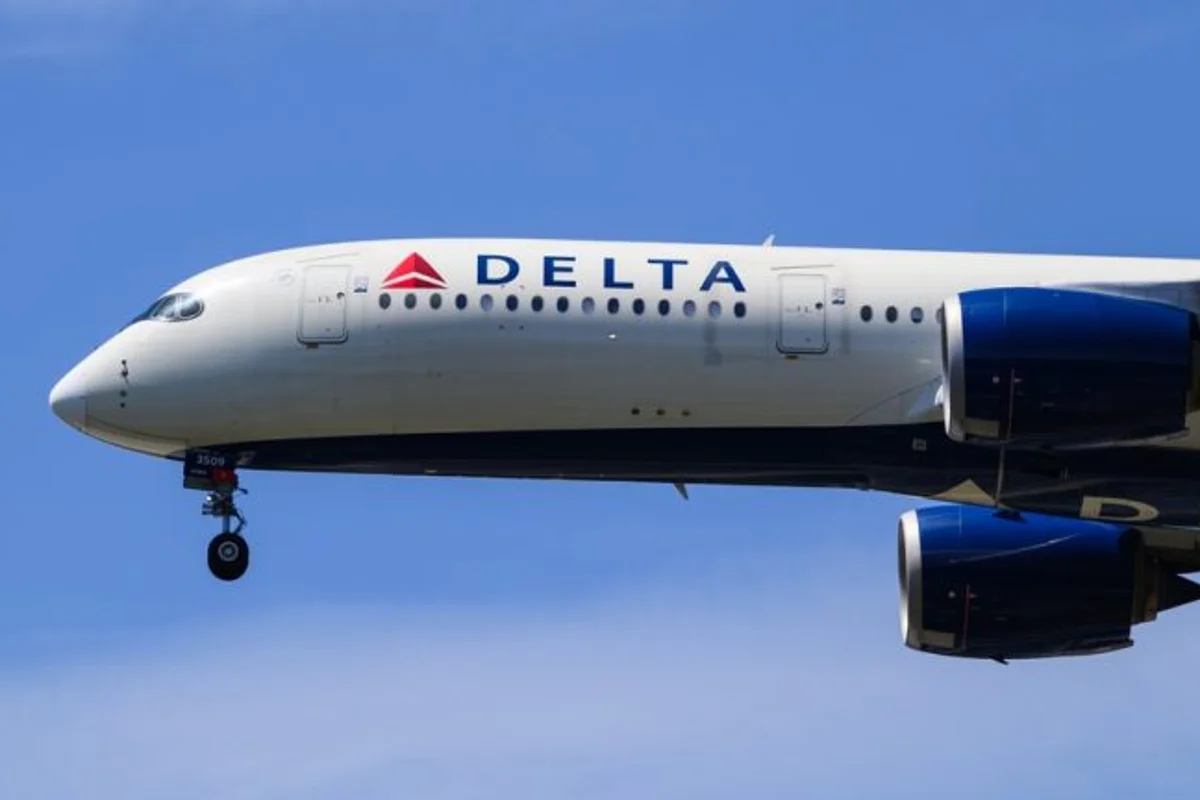Copyright benzinga

Analysts are saying that Delta Air Lines could rise by 2030. Bullish on DAL? Invest in Delta Air Lines on SoFi with no commissions. If it’s your first time signing up for SoFi, you’ll receive up to $1,000 in stock when you first fund your account. Plus, get a 1% bonus if you transfer your investments and keep them there until December 31, 2025. Delta Air Lines Inc. (DAL) is navigating capacity normalization, premium travel demand, and pressure from labor and fuel costs. The airline is also adjusting route networks while watching tariff developments that threaten costs and fleet growth. Investors should expect the stock to remain volatile. In this article, we’ll examine price-target forecasts through 2030, analyze Wall Street’s latest sentiment, and break down the bullish and bearish outlooks shaping DAL’s risk/reward proposition. Current DAL Stock Overview Market Cap: $37.07 billionTrailing P/E: 8.30Forward P/E: 7.871 Year Return: -0.22%YTD Return: -6% According to Benzinga, DAL is a consensus Buy with a price target of $68.69 based on the ratings of 20 analysts. The high target is $90, and the low is $39. The three most-recent price targets from BofA Securities, Raymond James, and UBS average $73 with an implied 28% upside. Quick Snapshot Table of Predictions Bull & Bear Case The bullish perspective centers on Delta’s ability to generate high-quality, non-ticket revenue. The bearish outlook highlights vulnerabilities stemming from macroeconomic headwinds, potential surges in operational costs, and geopolitical factors like new tariffs. Strength in premium travel bookings and high-margin loyalty programs, particularly Delta’s premium cabin offerings and its lucrative partnership with American Express through the SkyMiles loyalty program, continues to support Delta’s revenue growth.Effective jet fuel cost management and stable labor agreements help insulate the airline against the persistent headwinds of fluctuating fuel prices and higher labor expenses resulting from new pilot and crew contracts across the industry. Accelerating recovery in international routes drives higher passenger volumes as global travel restrictions ease.Gradual normalization of fleet capacity strengthens cash flow and operational efficiency.Strategic investments in technology and sustainability initiatives enhance brand appeal and long-term competitiveness. Tariff increases on imported aircraft and components elevate operating expenses and strain margins.Persistent international trade tensions create uncertainty around fleet expansion and partnership strategies.Fuel price volatility and ongoing labor negotiations may exert pressure on profitability and cost control.A slowdown in global economic growth could weaken discretionary travel demand, reducing ticket revenue.Heightened competition within both domestic and international markets may limit pricing flexibility and yield performance. DAL Stock Price Prediction for 2025 According to CoinCodex, DAL is projected to experience a moderate trading range with periodic volatility in 2025 amid short-term economic and operational challenges from geopolitical concerns and competitive pressures. Investors may anticipate ongoing fluctuations rather than a clear upward trend due to the tailwinds of premium demand and the full impact of rising labor costs and potential fallout from lingering tariff disputes impacting global commerce. DAL Stock Price Prediction for 2026 CoinCodex’s prediction for 2026 suggests that DAL could trade across a wider range than the preceding year, reflecting increased uncertainty as near-term growth catalysts begin to mature and industry capacity normalizes. This wider range and anticipated average price may be tied to the timing of new competitive capacity entering the market and the full, prolonged impact of expensive new labor agreements on unit costs. While the airline's premium focus acts as a powerful shield, the wider forecasted price movement indicates that the market is factoring in the risk of unexpected operational costs, such as sustained high jet fuel prices, that could seriously challenge margin expansion. DAL Stock Price Prediction for 2030 Looking ahead to 2030, CoinCodex’s forecast for DAL shows a substantial upside, anticipating a wide range that could result in an average annualized price significantly higher than its current level. The fundamental health of the business is expected to be substantially stronger, supported by a fully modernized and highly efficient fleet and the dominance of the Delta brand in the global premium travel market. Successful integration of the airline’s loyalty program revenue is a key component of this long-term bullish view, providing a steady, high-margin revenue stream that offsets the volatile operational landscape of fuel and labor costs. Investment Considerations Investors must evaluate Delta’s exposure to rising tariffs affecting imported aircraft and components, a risk management priority for leadership. The company has postponed deliveries of planes subject to tariffs and shifted capex allocations, aiming to prevent margin compression. As tariffs on planes and parts increase, Delta has said it may cease buying foreign-made aircraft, which could restrict fleet modernization and potentially eliminate routes serving millions of customers yearly. While premium travel demand has generally proven resilient, a deeper macroeconomic downturn could impact the high-income consumer base that drives Delta’s profits. The persistent threat of escalating tariffs and trade wars, which have previously impacted international travel demand, remains a risk to lucrative corporate and global bookings. Investors must closely assess the structural shift the company has made toward high-margin business, particularly the financial strength of its SkyMiles loyalty program, which is a source of steady cash flow that is less volatile than ticket sales and provides a significant moat against competitors. However, persistent operational costs, specifically the volatility of jet fuel prices and the impact of substantial new labor contracts have squeezed margins across the industry even amid high demand. Investors should closely monitor Delta's fuel hedging strategies and cost-per-available-seat-mile excluding fuel to accurately assess management's efficiency in controlling these core expenses.



